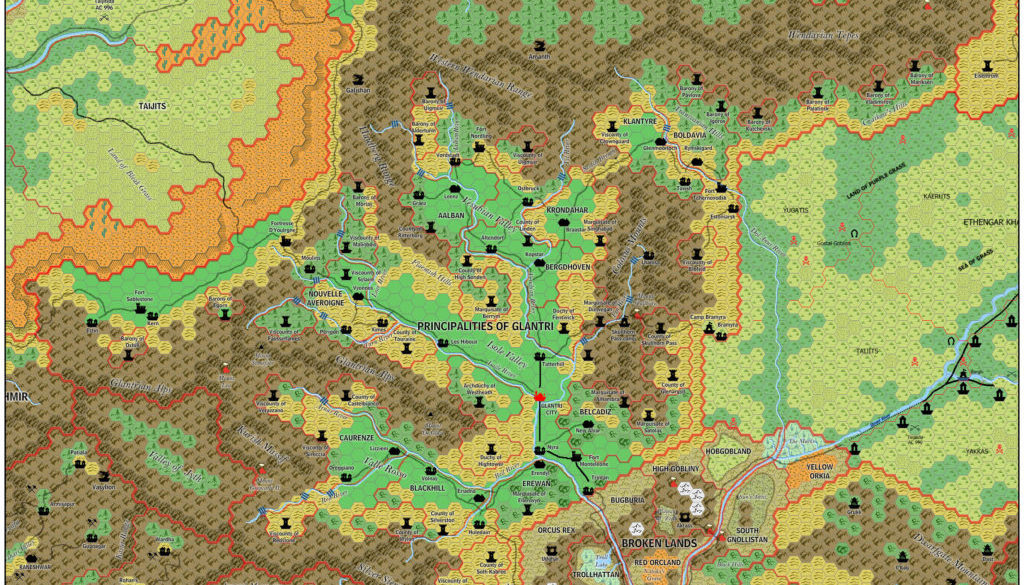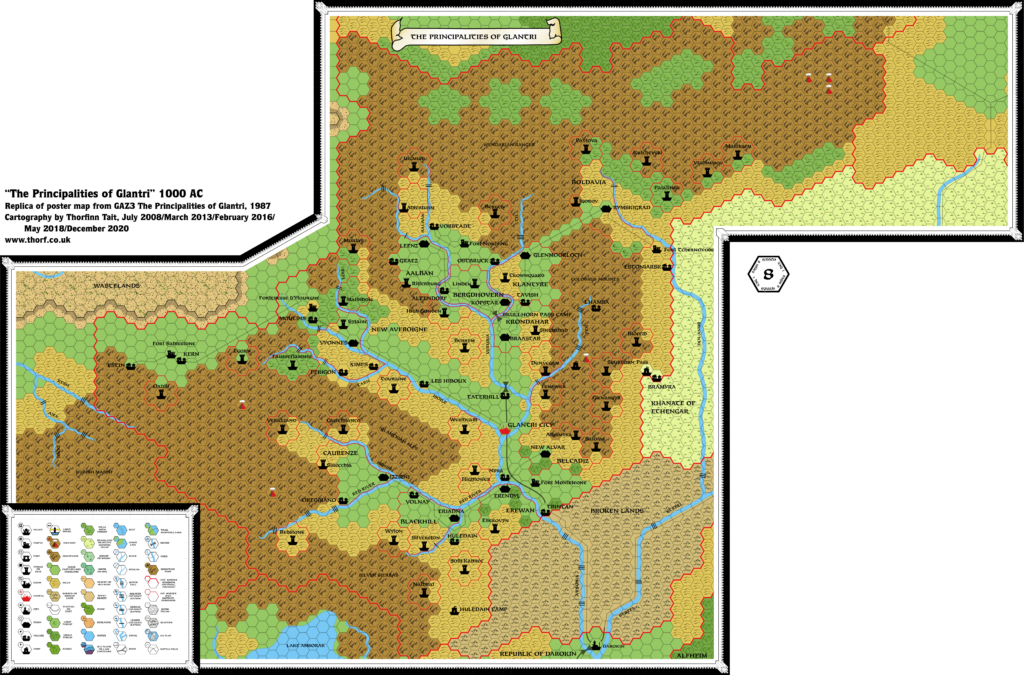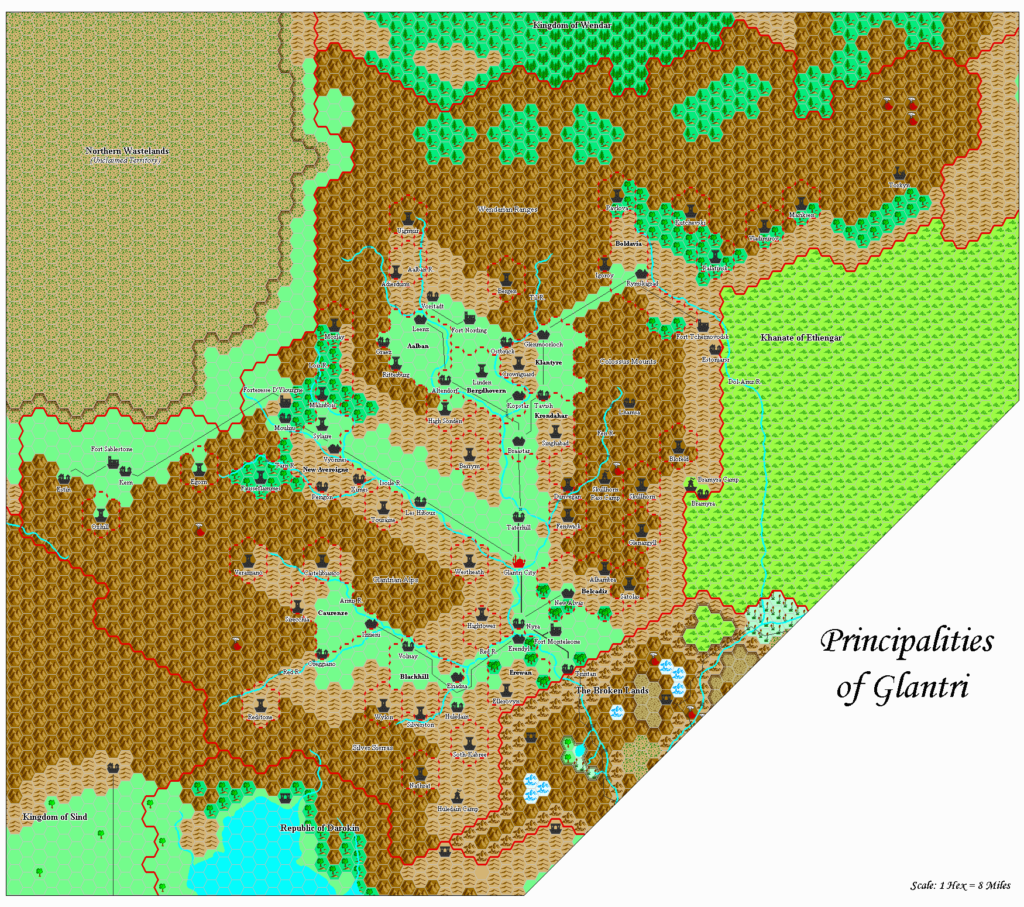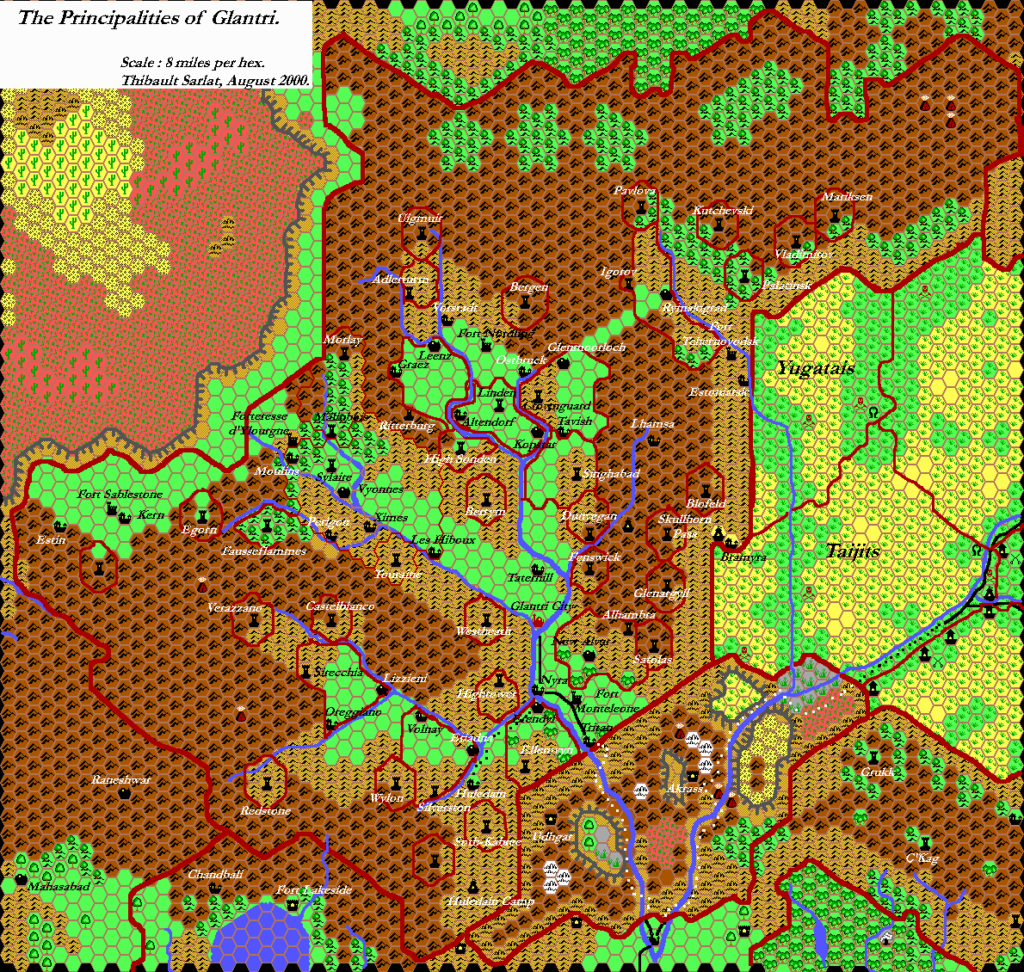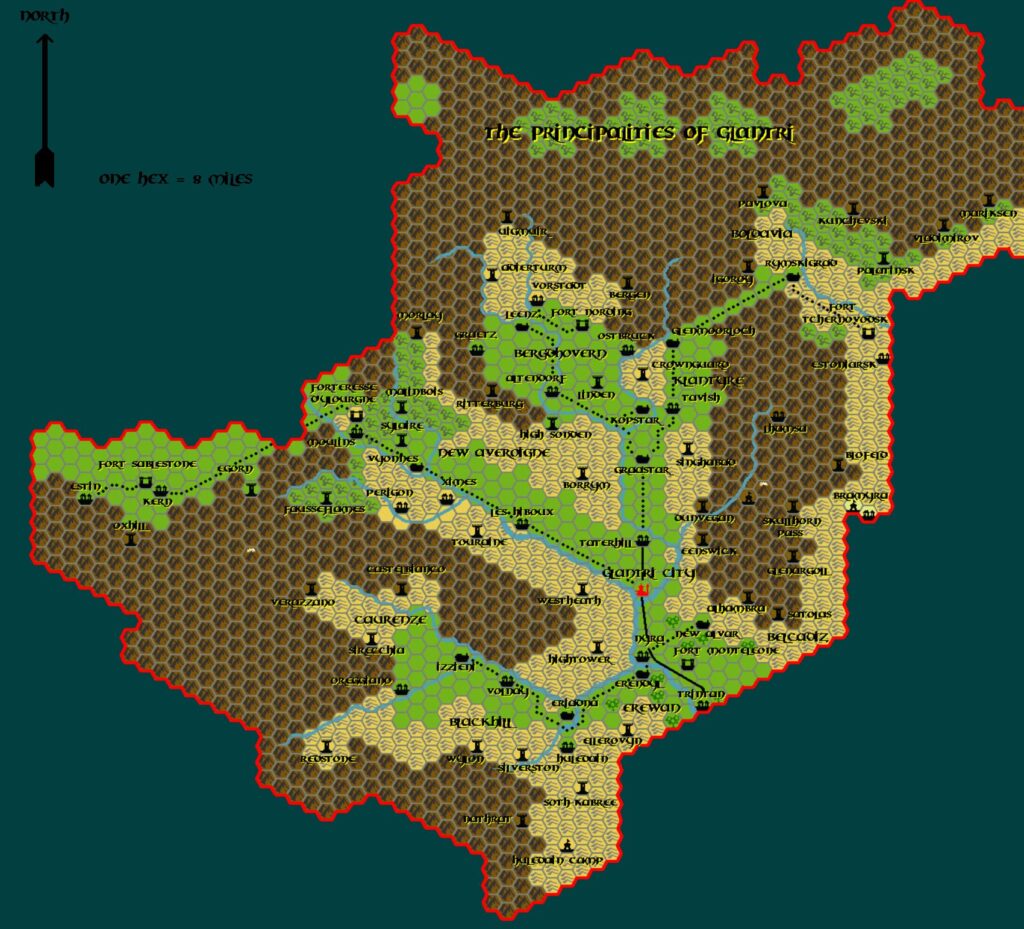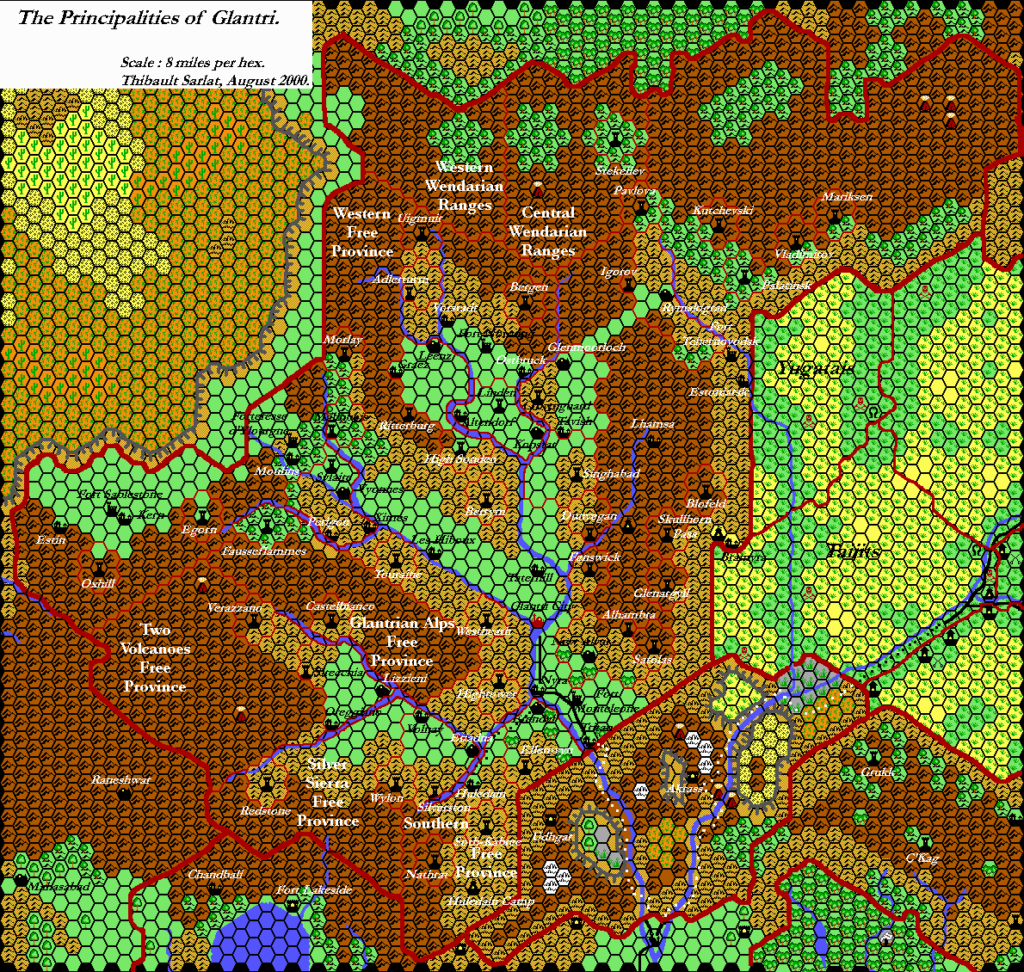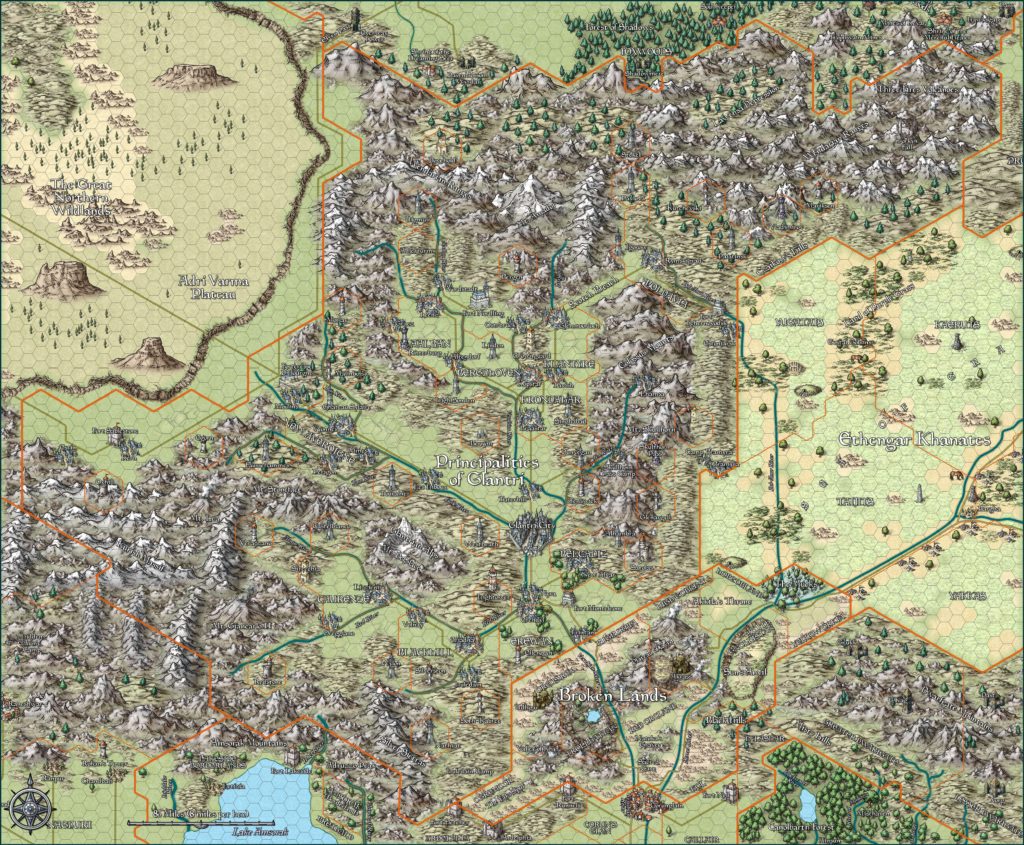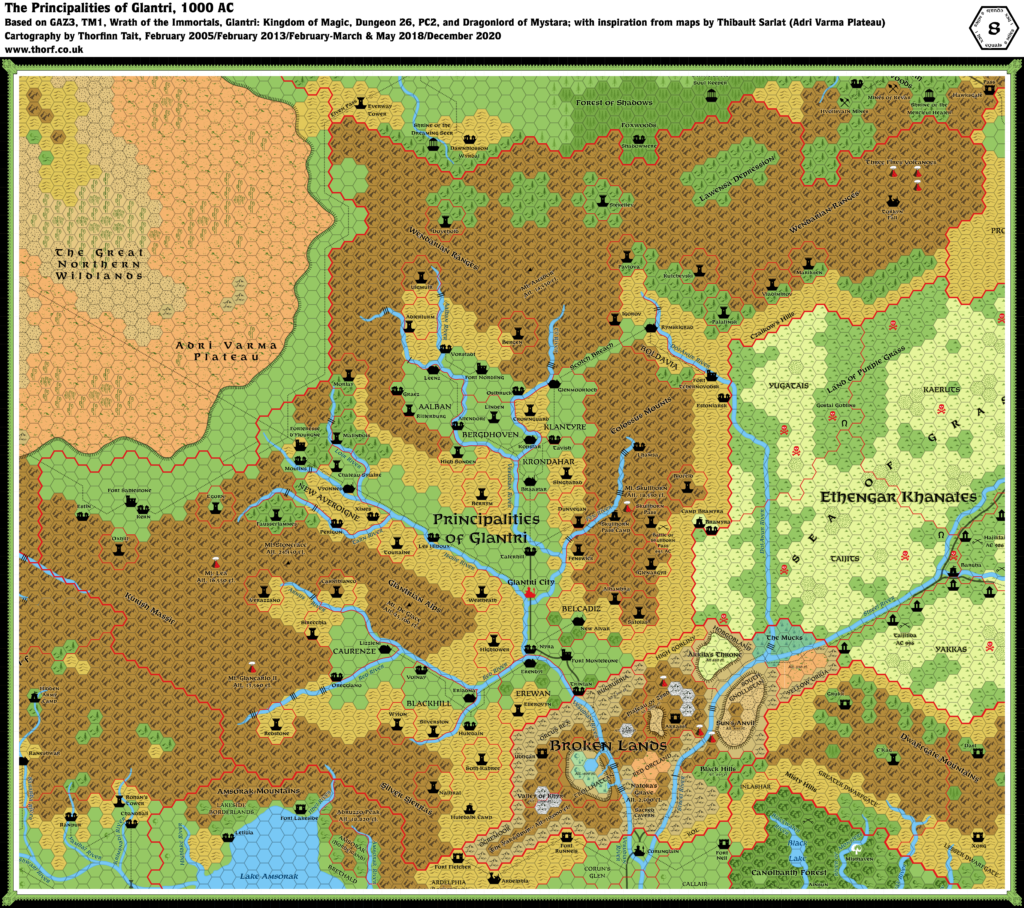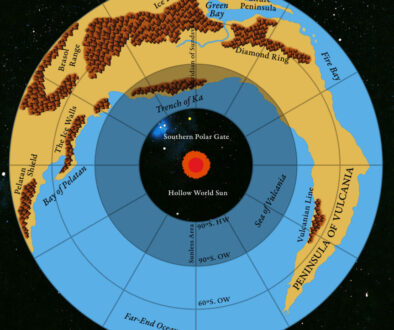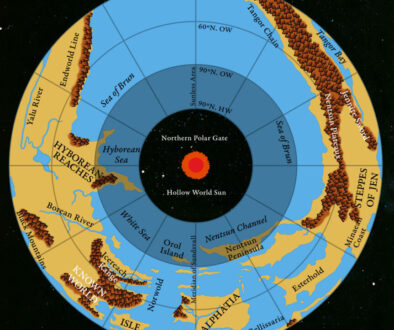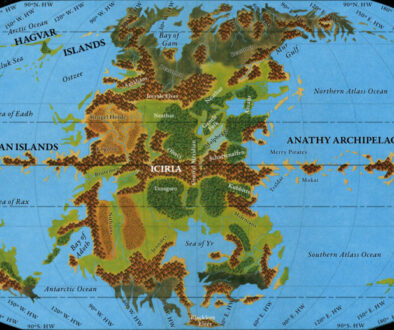Ramelin’s Glantri and the Broken Lands, 8 miles per hex
November 2015 was a momentous month for Jose’s project, as he finalised more than thirty individual maps over a couple of days. The first set covered most of the Known World, while the second finished that off and then moved west to cover the Serpent Peninsula and the Savage Coast.
Jose’s Glantri follows GAZ3’s pretty closely, with a few interesting tweaks and additions such as mountain ridges and a few marked dragon lairs. The edges of the map reveal more changes to come, with Ethengar appearing twice on this map: once in its usual location east of Glantri, but also a new version moved up onto the Adri Varma Plateau. This shows clearly how Jose was revising his version of Mystara as he went; and future versions would replace the old Ethengar with something else altogether.
Fan-made Map by Jose Ignacio Ramos Lomelin (November 2015)
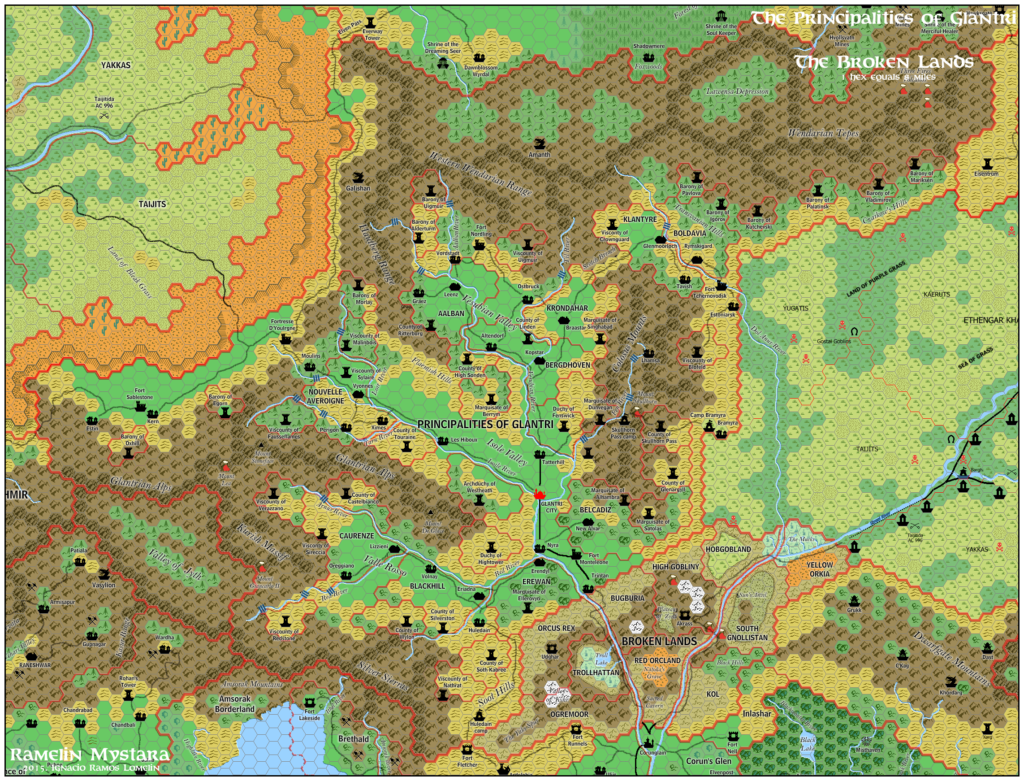
This is an original map created by one of Mystara’s excellent fan cartographers. For more information on the cartographer, including a gallery of all their maps, see also Appendix M: Mappers of Mystara.
Sources
- GAZ3 The Principalities of Glantri (1987) (PDF at DriveThruRPG)
- GAZ10 The Orcs of Thar (1989) (PDF at DriveThruRPG)
References
- All of Jose’s maps at the Atlas of Mystara
- Jose’s entry in Appendix M: Mappers of Mystara (upcoming)
- Jose’s author page at the Vaults of Pandius
Chronological Analysis
This is a fan-made map. It was published in November 2015. The updated Atlas version of this map is Glantri, 8 miles per hex, as well as Broken Lands, 8 miles per hex. See also Appendix C for annual chronological snapshots of the area. For the full context of this map in Mystara’s publication history, see the upcoming Let’s Map Mystara 2015. (Please note that it may be some time before the project reaches this point.)
The following lists are from the Let’s Map Mystara project. Additions are new features, introduced in this map. Revisions are changes to previously-introduced features. Hex Art & Fonts track design elements. Finally, Textual Additions are potential features found in the related text. In most cases, the Atlas adopts these textual additions into updated and chronological maps.
Coming Soon

